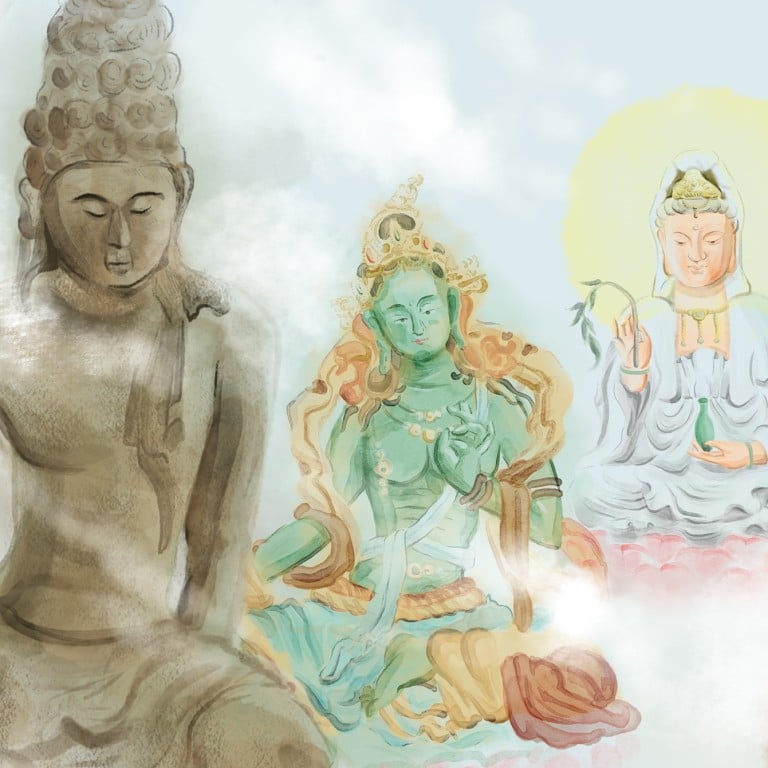
The many legends of Guanyin – or Kwun Yum – the goddess of mercy revered in Hong Kong and around the world
- One of the most popular deities in the pantheons of Buddhism, Taoism and Chinese folk religion has origin stories as varied as she is celebrated
- Guanyin, or Kwun Yum as she is known in Hong Kong, used to be a male bodhisattva called Avalokitesvara
The goddess of mercy Guanyin is found in almost every Chinese temple in the world.
Known as Kwun Yum in Hong Kong, she is exalted in Chinese folk religion, Taoism and Buddhism – a transcendental position few can claim.
She is even present in tea: Tit Kwun Yum or Tie Guanyin, is a popular choice at Chinese restaurants, making the goddess’ name ubiquitous worldwide.
City Weekend explores the legend of Guanyin, whose sympathy and compassion have made her a widely revered deity among believers.
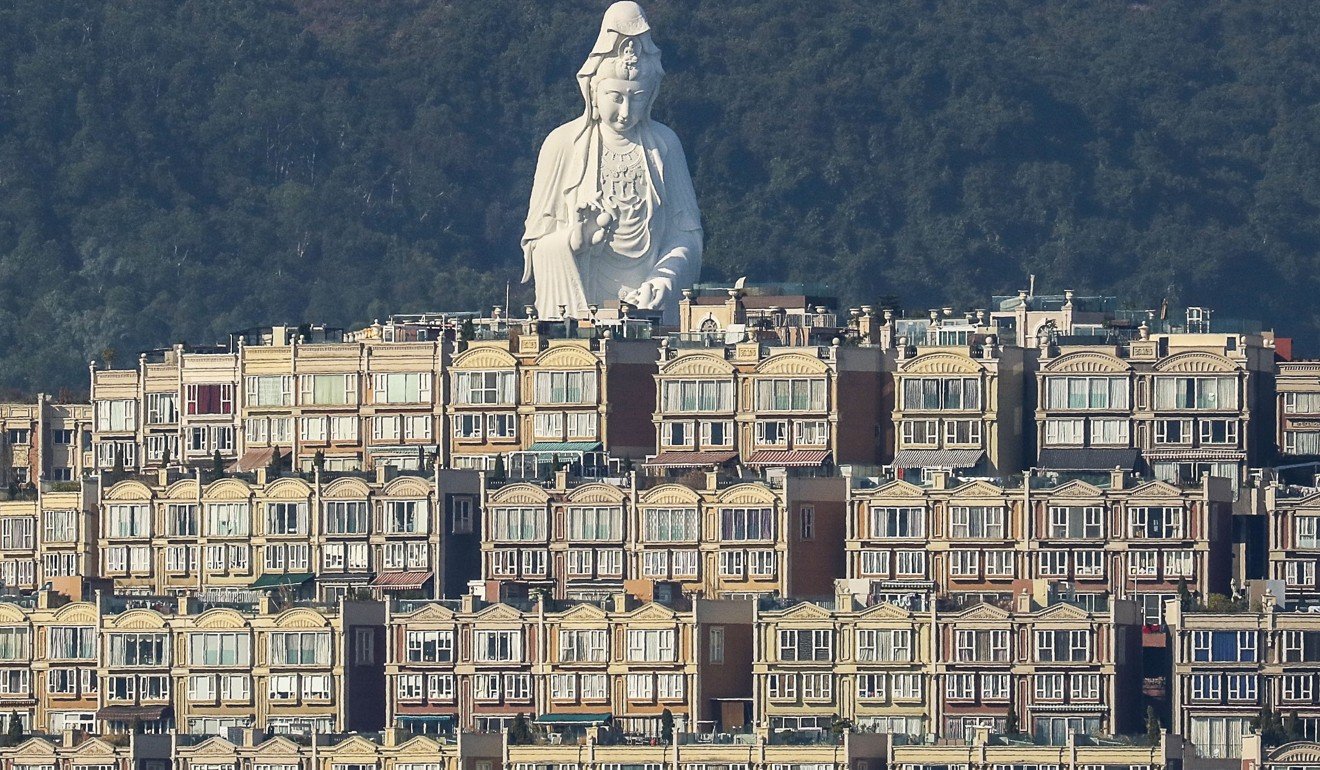
How did all begin?
The origin stories of Guanyin are as varied as she is celebrated. A common thread through the tales, however, is that the goddess we know today, is in fact an amalgamation of many deities.
Guanyin began her journey to Chinese sainthood as the male Avalokitesvara, the bodhisattva of compassion. However, because the deity grew to become increasingly associated with feminine yin energies, he slowly morphed into the version known and loved today.

In the 16th century, Chinese novelist Wu Cheng’en wrote Journey to the West, which became one of the four great novels in Chinese literature. While the story was about the adventures of the Monkey King, Guanyin factors importantly in this magical quest to bring sacred scrolls back to China. For example, she is responsible for the golden ring around the Monkey King’s head, used by his master to subdue him, and occasionally aids in their fight against demons.
City of gods: Hong Kong’s varied cast of ancient deities explained
The inspiration for the narrative was rooted in Chinese monk Xuanzang’s return from India with Mahayana Buddhist scriptures in the 7th century. Xuanzang, who is accredited as the first to bring an early version of Guanyin into both the Chinese language and religious ideology, translated Avalokitesvara, whose name roughly means “lord who gazes down at the world” into Guanshiyin, which means “perceiving the sounds of the world”. This was shortened to Guanyin, or Kwun Yum in Cantonese, so as not to disrespect the Tang emperor Taizong, whose given name sounded phonetically too similar to Avalokitesvara’s adopted name.
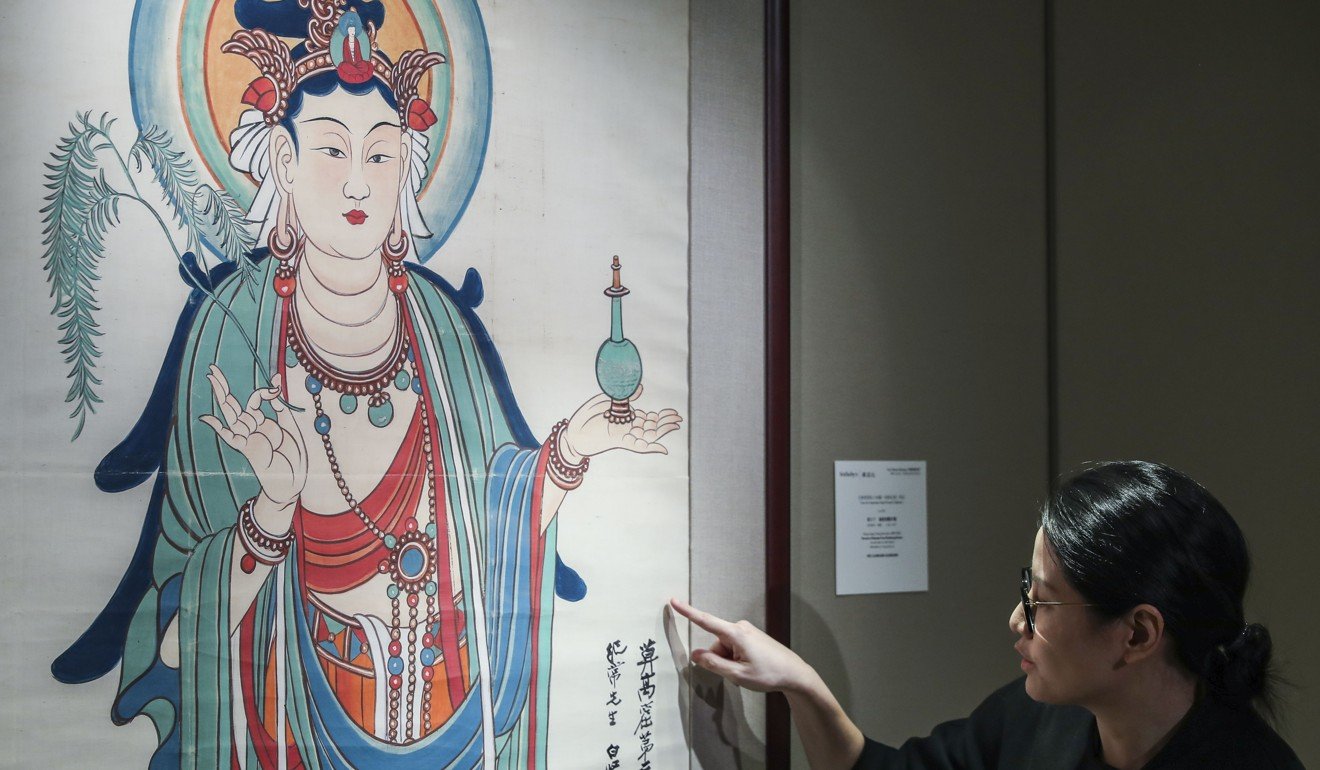
At around the same time, Vajrayana, a Tibetan form of Buddhism, also began to gain a foothold among the Han Chinese. The goddess of meditation, Tara, of this esoteric form of Buddhism gradually grew in popularity until she too, merged with Guanyin.
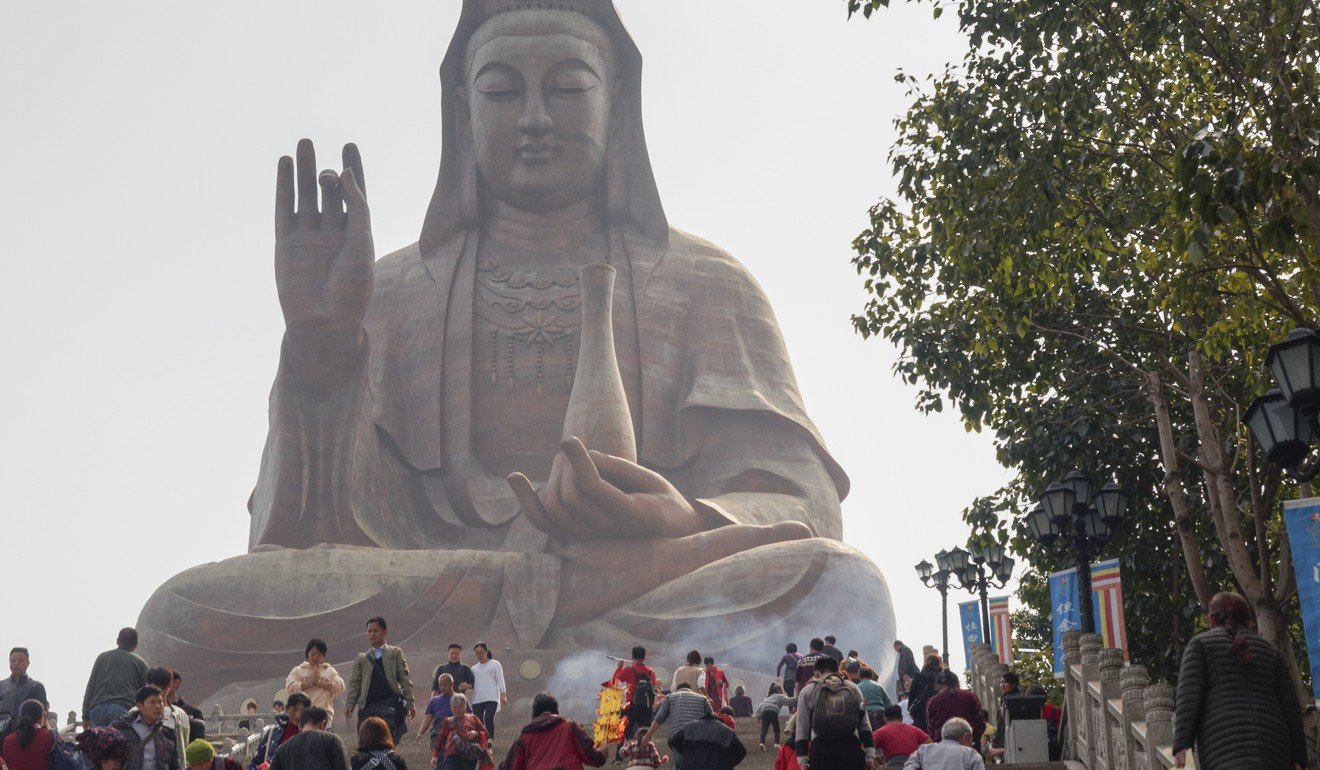
What emerged from this marriage was a Guanyin with Avalokitesvara’s compassion, and Tara’s duties to love, maternity, and children.
As the once-male Guanyin morphed into a female, the legend of Miao Shan arose as a story that eventually intertwined itself with the myths of the goddess. First recorded in the 11th century by Jiang Zhiqi, the story celebrates the selflessness of a young princess, Miao Shan, who sacrificed her life so that her wicked father could live. Miao Shan, who had been initially punished for refusing to marry, had been seeking refuge in Xiang Shan Monastery at the time.
Is Li Ka-shing’s Buddhist Art Museum a religious milestone for Hong Kong?
After learning that his daughter had given up her eyes and arms to save him, the king reformed his character and committed himself to Buddhism. Miraculously, Miao Shan survived, and her eyes and arms were restored, revealing to the world that she was, in fact, an incarnation of Guanyin, the goddess with a thousand eyes and arms.
Over the centuries, the swirling legends of Guanyin came together, and Taoists and Buddhists both claimed her as a goddess in their pantheon.
How has Guanyin been interpreted through the eras?
Depictions of Guanyin before the Song dynasty (960-1279) represented her as masculine. Later, she developed attributes of both sexes, in accordance with the Lotus Sutra. At around the 12th century, Guanyin became interpreted as fully female – being represented, at times, with an infant in her arms, implying the relationship between the goddess and maternity.

Today, Guanyin is most often seen as a woman dressed in flowing white robes. Sometimes, she is depicted with a willow branch in her right hand, a symbol that juxtaposes her beauty with the powers of exorcism.
In her left hand, she often holds a jar of purifying liquid to cleanse the pain of those who pray to her. Her image is adorned with pearls, viewed as a feminine yin element. They hang around Guanyin as physical manifestations of the full moon, a symbol of perfection.
In photos: Kwun Yum Treasury festival begins
In Chinese Buddhist iconography, Guanyin is often depicted as sitting cross-legged in meditation. This image – the symbol of compassion – can be seen in vegetarian restaurants throughout East Asia. Here, she is often pictured with a lotus flower, which is both the Chinese symbol of fertility and the Buddhist emblem of purity.
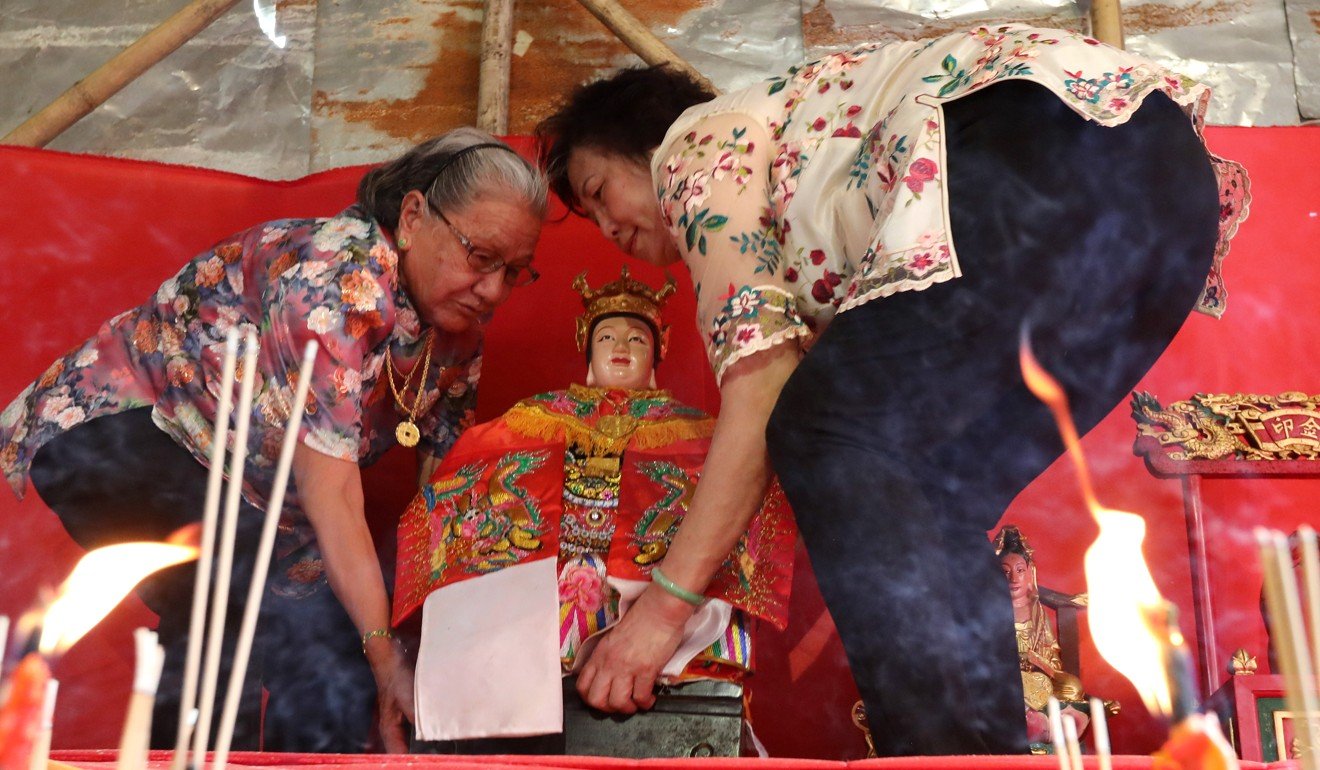
How is she worshipped in Hong Kong?
The famous Hung Hom Kwun Yum Temple, built in 1873, is busy year-round, with tourists and worshippers alike stepping into the candlelit structure.
The Kwun Yum temples around the city are filled with representations of the goddess from all three religious doctrines: Taoist, Buddhist and folk. Her child attendants, Kam Tung and Yuk Neoi, are often depicted nearby.

On the 26th day of the first lunar month, tens of thousands of worshippers turn to the temples to “borrow money” from the goddess for the Kwun Yum Open Treasury Festival, exchanging incense for red papers that bear economic blessings.
On the 19th day of the second, sixth, ninth, and eleventh lunar months, which correspond to the goddess’ birth, ordination, deification and assumption as a sea goddess, temples around the city fill with people in joyous celebration.
Due to Guanyin’s Buddhist roots, she is the only Chinese deity not offered meat or alcohol during worship.

